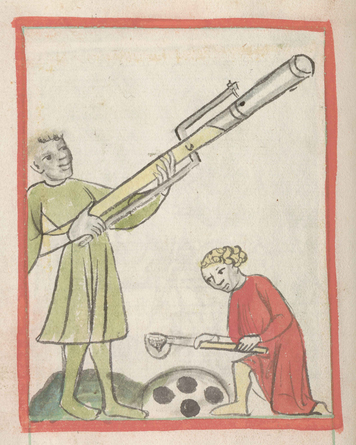On one of my more or less frequent museum trips, I finally found it. I have seen pictures of handgonnes with up to four or five barrels, and I have always wondered why the medieval hillbillies never bothered to make an old fashioned shotgun, just like Elmer Fudd’s. But this time it was waiting for me at the Schloss Gottorf Museum in Schleswig, northern Germany. I took millions of pictures, but I won’t be producing any reproduction of it; it is (sadly) dated to circa 1420. I’ll just look at it as a grand piece of fire, smoke, noise and death. Now – you do it!

Note the square touch holes; I would be surprised if they were both primed at the same time – at least if the shooter’s intention was to fire one shot at a time




